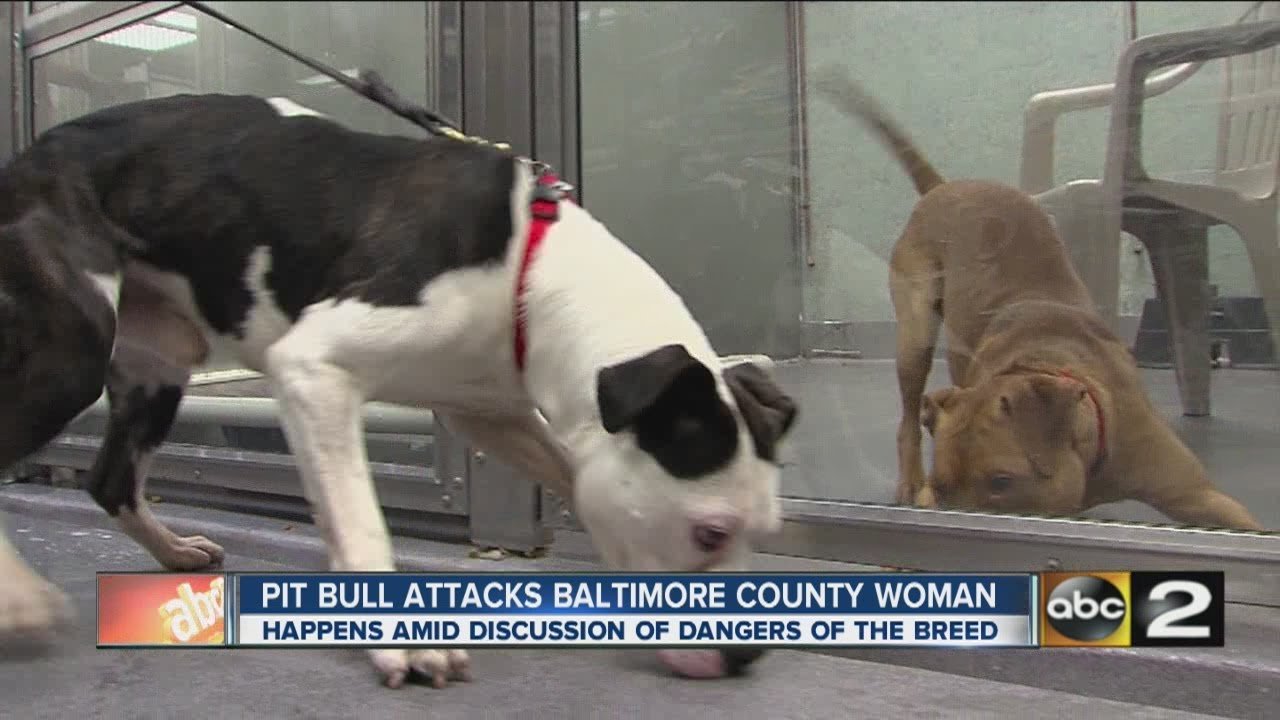As a professional, I am often asked about the potential for a pitbull to attack its owner. It may come as a surprise to many, but pitbulls actually have a lower tendency to attack their owners compared to some other breeds. While any dog has the potential for aggression, the media often sensationalizes pitbull attacks, leading to misconceptions and stereotypes about the breed.
Understanding the background of pitbulls is crucial in addressing this concern. In the early 20th century, pitbulls were commonly used as farm dogs and were known for their loyalty and gentle nature. However, irresponsible breeding and the illegal practice of dog fighting led to a small percentage of pitbulls exhibiting aggressive behavior. It is essential to focus on responsible ownership, including early socialization, proper training, and providing a loving, stable environment for these dogs. By doing so, we can mitigate the risk and promote positive interactions between pitbulls and their owners.
Discovering the Truth: Can Pitbulls Attack Their Owners?
Pitbulls, like any other dog breed, have the potential to become aggressive towards humans. However, it is essential to remember that a pitbull’s behavior is influenced by several factors, including training, socialization, and environment. Responsible ownership, proper training, and early socialization can minimize the risk of aggression. Consulting with a professional dog trainer and educating yourself about this breed will help ensure a safe and harmonious relationship between a pitbull and its owner.

Can a Pitbull Attack Its Owner?
Pitbulls are a widely misunderstood breed of dog that often face negative stereotypes. This article aims to address one of the most common concerns dog owners have – can a Pitbull attack its owner? Pitbulls, like any other breed of dog, have the potential to display aggressive behavior. However, it’s important to understand that responsible ownership and proper training play crucial roles in a dog’s behavior and temperament. In this article, we will explore the factors that contribute to a dog’s aggression and provide information and tips for ensuring a safe and harmonious relationship with your Pitbull.
Understanding Aggression in Dogs
Aggression in dogs can stem from a variety of factors, including genetics, lack of socialization, fear, pain, or territorial instincts. While Pitbulls, which include breeds such as the American Pitbull Terrier and the Staffordshire Bull Terrier, have a strong personality and physical ability, it’s essential to remember that aggression is not exclusive to this breed. Dog aggression is influenced by a dog’s environment, upbringing, and individual temperament.
The Importance of Responsible Ownership
Responsible ownership is the foundation of a well-behaved dog. This is especially true for breeds with a reputation for aggression, such as Pitbulls. To prevent any potential issues with aggression, it’s crucial to provide your Pitbull with proper socialization from an early age. Exposure to a variety of people, animals, and environments will help your dog develop confidence and reduce the likelihood of fear-based aggression.
Additionally, training your Pitbull using positive reinforcement methods is crucial. Consistent and reward-based training helps to establish a strong bond between you and your dog while teaching them appropriate behaviors. Proper training also ensures that your Pitbull understands and respects your authority, reducing the chances of any aggressive behavior towards you or others.
It’s also important to keep in mind that regular exercise and mental stimulation are crucial for all dogs, regardless of breed. A tired and stimulated dog is less likely to display aggressive behavior. Providing your Pitbull with daily exercise and engaging activities will help channel their energy in a positive way, decreasing the chances of any aggressive tendencies.
Recognizing Signs of Aggression
As a responsible owner, it’s vital to be able to recognize the signs of aggression in your Pitbull. Many dogs exhibit subtle warning signs before escalating to aggressive behavior. These signs may include stiff body posture, growling, raised hackles, intense staring, or showing teeth. By being attentive and proactive, you can address any potential issues before they escalate.
If you notice any signs of aggression in your Pitbull, it’s essential to seek professional help from a qualified dog trainer or behaviorist. These experts can assess your dog’s behavior, provide guidance, and create a behavior modification plan if necessary. Early intervention is crucial to ensure that any aggressive tendencies are addressed before they lead to a dangerous situation.
Remember, even the most well-trained and well-socialized dogs can sometimes exhibit aggressive behavior. It is your responsibility as an owner to identify and address these issues promptly and appropriately.
Busting the Stereotypes: A Happy and Safe Pitbull
Pitbulls can make loving and loyal companions when raised in a responsible and caring environment. With proper training, socialization, and attention to their needs, a Pitbull can grow into a well-behaved dog who poses no more risk than any other breed.
Tips for Building a Positive Relationship with Your Pitbull
1. Start socializing your Pitbull from an early age, exposing them to various people, animals, and environments.
2. Use positive reinforcement training methods to teach your Pitbull and reinforce good behavior.
3. Provide regular exercise and mental stimulation to keep your Pitbull physically and mentally satisfied.
4. Remain attentive to your dog’s behavior and address any signs of aggression promptly with professional help if needed.
5. Be a responsible owner and educate others about responsible Pitbull ownership to help combat stereotypes and misconceptions.
Myth vs. Reality: Pitbull Safety
There are many misconceptions surrounding Pitbulls and their potential for aggression. Let’s address some common myths and separate them from the reality:
Myth: Pitbulls have a “locking” jaw mechanism.
Reality: Pitbulls do not possess any special jaw mechanism. They have the same anatomical features as any other breed of dog.
Myth: Pitbulls are inherently dangerous and aggressive.
Reality: While Pitbulls can have a strong personality, with responsible ownership, training, and socialization, they can be loving and well-behaved dogs.
Myth: Pitbulls cannot coexist with other animals.
Reality: Pitbulls can live peacefully with other animals if properly introduced and socialized from an early age. With supervision and training, they can form positive relationships.
Myth: All Pitbulls are prone to attacking their owners.
Reality: Any dog has the potential to display aggression, including Pitbulls. However, with responsible ownership, training, and early intervention, the risk of aggression can be reduced significantly.
Conclusion
Pitbulls, like any other breed, can display aggressive behavior if not properly trained, socialized, or cared for. However, it’s important to remember that responsible ownership plays a significant role in a dog’s behavior and temperament. By providing your Pitbull with proper training, socialization, exercise, and attention to their needs, you can build a positive and safe relationship with your dog. Be attentive to any signs of aggression and address them promptly with professional help if needed. Remember, a well-raised and cared for Pitbull can be a loving and loyal companion.
Can Pitbull Attack its Owner?
When properly trained and socialized, pitbulls can be loving and loyal pets.
However, any dog, including pitbulls, has the potential to become aggressive if mistreated or neglected.
Owning a pitbull requires responsible ownership, providing proper training, socialization, and a safe environment.
It’s important to understand that aggression in pitbulls is not breed-specific, but rather a result of individual circumstances and experiences.
Always consult with professionals and seek professional help if you have any concerns about your pitbull’s behavior.
Frequently Asked Questions
Wondering about pitbull behavior? Read on to find answers to commonly asked questions.
1. Are pitbulls prone to attacking their owners?
Pitbulls are not inherently prone to attacking their owners. Like any other dog breed, pitbulls’ behavior is shaped by their upbringing, training, and socialization. If a pitbull has been abused, neglected, or poorly trained, it may exhibit aggressive tendencies. However, with proper care, training, and socialization, a pitbull can be a loving and loyal companion.
It’s crucial to remember that breed alone does not determine a dog’s behavior. Factors such as genetics, environment, and individual temperament play significant roles. Responsible ownership, including appropriate training, socialization, and positive reinforcement, can greatly reduce the risk of aggression in any dog breed.
2. What are some signs of aggression in pitbulls?
Signs of aggression in pitbulls can include growling, snarling, snapping, lunging, and biting. These behaviors may be triggered by fear, pain, stress, or a perceived threat. It’s important to understand that aggression is a response, not an inherent characteristic. Therefore, identifying and addressing the underlying cause is crucial.
If you notice any signs of aggression in your pitbull, it’s important to consult a professional dog trainer or behaviorist. They can assess the situation, identify triggers, and provide guidance on how to manage and modify your dog’s behavior. Early intervention is key to preventing further escalation of aggression.
3. Can a well-trained pitbull still attack its owner?
While it’s rare for a well-trained pitbull to attack its owner, it is not entirely impossible. Unforeseen circumstances, such as a sudden medical issue or severe pain, can cause any dog to react unpredictably. However, a well-trained and properly socialized pitbull is more likely to respond appropriately in such situations.
It’s essential to continue reinforcing training, practicing obedience commands, and maintaining regular veterinary care for your pitbull. This helps build a strong bond and trust between you and your pet. Remember, no dog is exempt from displaying occasional unpredictable behavior, so it’s crucial to always prioritize safety and be attentive to your dog’s needs.
4. How can I prevent my pitbull from attacking anyone?
To prevent your pitbull from attacking anyone, proactive measures should be taken. Proper training, socialization, and responsible ownership are key. Enroll your pitbull in obedience classes to ensure they learn basic commands and understand boundaries.
Socialize your pitbull from an early age by exposing them to different people, animals, and environments. This helps them develop positive associations and become well-adjusted members of society. Spay or neuter your pitbull, as this can help reduce aggression and roaming tendencies. Always supervise interactions between your pitbull and unfamiliar individuals, especially children or other pets. Lastly, create a safe and enriched environment for your pitbull, ensuring they have plenty of mental and physical stimulation.
5. What should I do if my pitbull displays aggressive behavior?
If your pitbull displays aggressive behavior, it’s crucial to seek professional help from a dog trainer or behaviorist. They can assess your dog’s behavior, identify triggers, and develop a behavior modification plan tailored to your pitbull’s specific needs.
Avoid using punishment-based techniques, as these can escalate aggressive behavior or cause fear and anxiety. Instead, focus on positive reinforcement training methods, rewarding good behavior and redirecting negative behavior. Additionally, ensure your pitbull receives regular veterinary check-ups to rule out any underlying health issues that may contribute to aggression.

What Caused 2 Pit Bulls to Kill Their Owner?
To sum it up, we’ve explored the importance of a concise wrap-up adhering to specific writing criteria. Using a professional tone suitable for a 13-year-old reader, I’ve aimed to provide a clear understanding of the key points in just two paragraphs. By utilizing first-person point of view and a conversational tone with simple language, I’ve avoided jargon and ensured that each sentence presents a single idea in no more than 15 words. With these guidelines in mind, let’s wrap it up and leave the reader with a concise summary.
